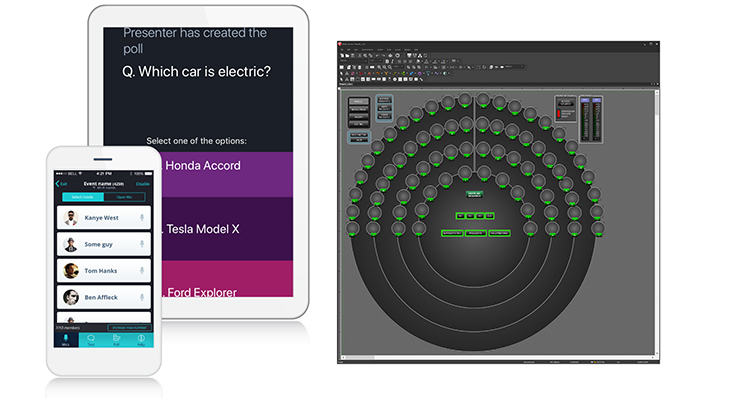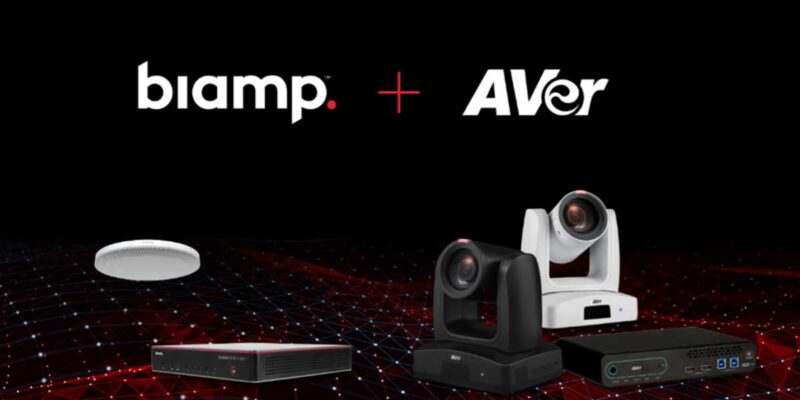Are Crowd Mics a Potential Game Changer?
 A couple months ago, I wrote about the various problems that arise when people choose not to use microphones during large meetings or classes. In particular, I was discussing the negative impacts this choice has on people who have some type of hearing issue or hearing loss. I wrote about my belief that all rooms of larger than 30 people would, ideally, have a quality sound reinforcement system. Yet, putting in a good system, with quality mics is very expensive and takes proper engineering, so it often doesn’t happen. As I wrote that, I was thinking about traditional sound reinforcement technologies like array mics, shotgun mic, etc. that may be installed in the room.
A couple months ago, I wrote about the various problems that arise when people choose not to use microphones during large meetings or classes. In particular, I was discussing the negative impacts this choice has on people who have some type of hearing issue or hearing loss. I wrote about my belief that all rooms of larger than 30 people would, ideally, have a quality sound reinforcement system. Yet, putting in a good system, with quality mics is very expensive and takes proper engineering, so it often doesn’t happen. As I wrote that, I was thinking about traditional sound reinforcement technologies like array mics, shotgun mic, etc. that may be installed in the room.
Between then and now, ISE came about and I learned of Biamp’s announcement that they would be releasing its Crowd Mics product in the second quarter of this year. Although Biamp purchased Crowd Mics in 2018, they are only now close to releasing the product.
While no product has been released yet, Biamp and other media sources have released enough information about the product that we can begin to understand how it works. A small control box is installed into your AV system and this allows smart phones in the audience to connect to it via Wi-Fi and act as microphones. An app is installed on the computer in the room and that app gives you control of the Crowd Mic device. So, picture this in a classroom setting. The faculty member can choose to make all the microphones active at one time. When a student has a question, they can simply turn on their mic and ask the question. Most questions asked in a educational setting are nuanced and lengthy. With Crowd Mics, the problems of not being able to hear a question and therefore being confused with an answer are gone.
Another great use for this equipment would be in a faculty meeting. Typically, these are rather large (over 100 faculty), and there are lots of questions and on occasion, voting. In this case, the person running the meeting could have the application open. They would close all the microphones. When faculty want to ask a question they can open the application on their phone and “raise their hand.” This gives the moderator an opportunity to get to the people in the same order that they first “raised their hand.” Most importantly, everyone in the room gets to hear the question. Imagine this over the current scenario of people running microphones around the room or having mics on stands in the aisles for people to get up and ask questions. This scenario produces a much more relaxed, professional and productive environment.
Additionally, Crowd Mics includes features to turn the phone into a polling device and a chat device. Many classroom technology managers have been dealing with polling devices for years. Slowly, we have moved away from the proprietary “clickers” that are part of many systems to using phones, tablets and computers as the response device. Moving that polling to Crowd Mics would be a smooth transition. Granted, I have not been able to find out much about the polling features, other than that they exist. I don’t know if it integrates into PowerPoint, can match a response with a person or can then export that data — all features critical to it being used in classrooms.
For all of us that work in education, I know there is one thing bouncing around our heads: How do we actually make the faculty use this system? I don’t think we can do it alone. You will need to gain the support of administration. You may be able to do that by focusing in on the issue of inclusion. You would have to demonstrate to them that this improves meetings and classes.
I like to think about the potential for this product. Could it eventually serve as an in-ear sound reinforcement? That is, if a person had a hearing impairment they could use the product as a hearing aid while in the room? Is there the possibility that the system could record the audio in the room?
Finally, I think one of the most important reasons to use this in the classroom is to engage our students. I have always thought, both with college age students and younger, that as soon as you tell them to put their phones away you are telling them that what is about to happen does not relate to the real world. When we give them a reason to take out those devices and use them to enhance their learning, we are engaging students in a way that captures their interest. I am very excited to see the first release of this product, including knowing what Biamp has priced it at. If it works as promised and has a reasonable price tag, Crowd Mics holds massive potential in higher education.




